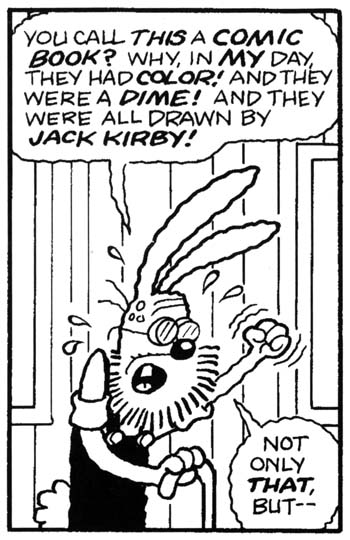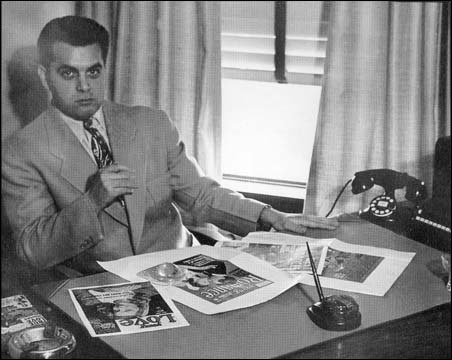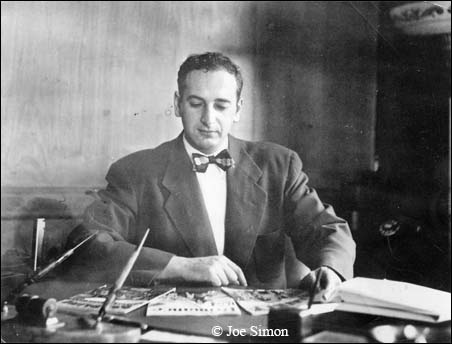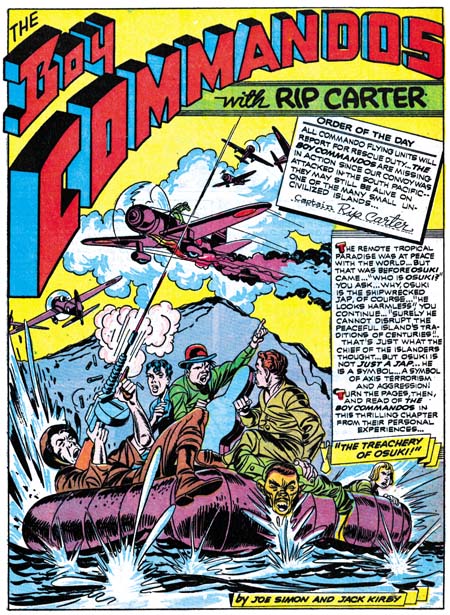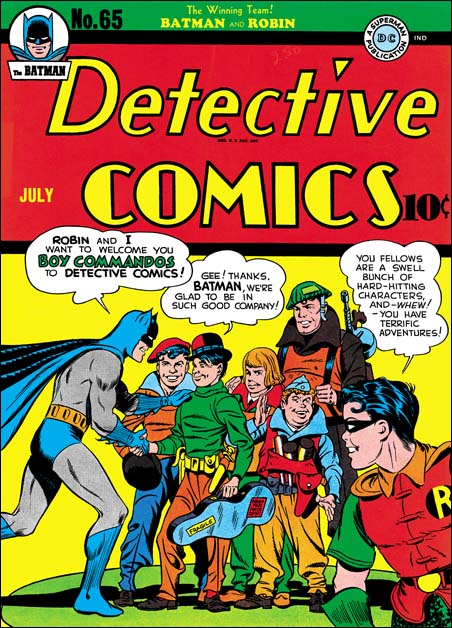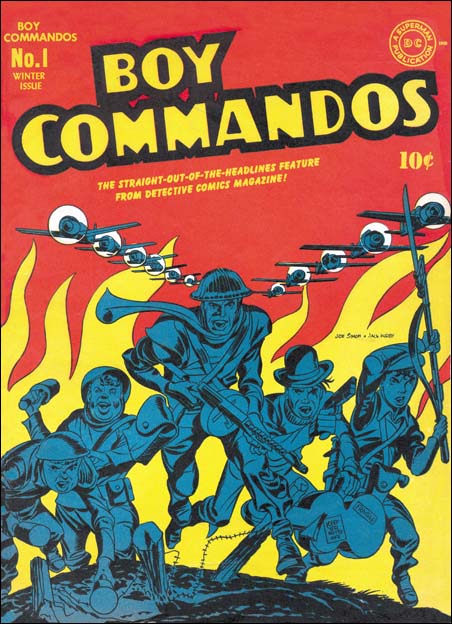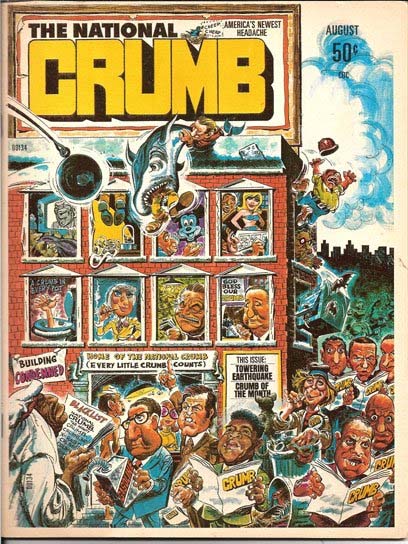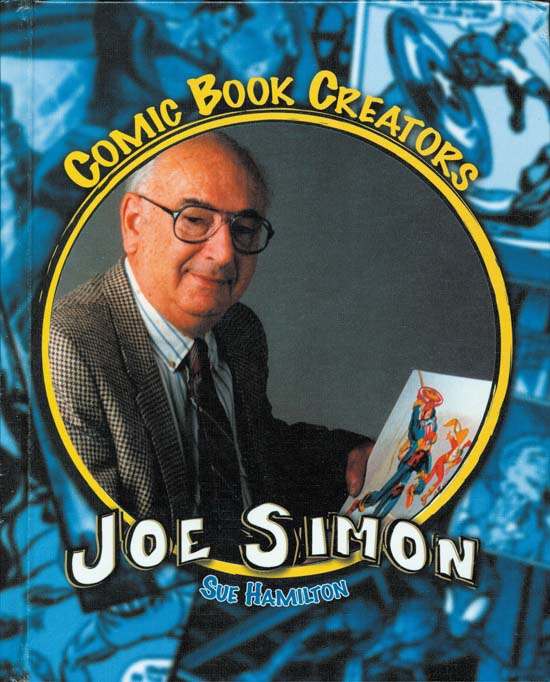Joe Simon has a large collection of original art, proofs and published work. Among it are a number of unusual pieces of work. Perhaps the most unusual, and certainly for me the most unexpected, is a screen play called “Fish In A Barrel”. When I asked Joe about it he said it was done about 1955. He added that it had already been included in his book. I was a bit puzzled because I did not remember any screen play in the book. Well I looked at a copy of “The Comic Book Makers” and with his help found what he was talking about. It was a write up on the Simon and Kirby legal conflict with Feature Publications. Now the book version is a historical account, not a screen play. I will discuss the relationship between the play and the book later.
“Fish In A Barrel” is a script for a three act screen play. It is 77 single sided pages long with the text in a column on the left half of the page. I presume the right hand side of the page was left empty to allow for hand writing of notes and alterations. I call this a screen play because camera directions are often provided. Although a screen play it was meant to be performed in front of spectators since at one point there is a note about spontaneous laughter from the audience. There are three sets all of which are in offices or in the hallway entrance to the offices.
It has a small casts of characters, six main ones. There is the comic book publisher, powerful and used to getting his way. The publisher’s assistant, eager to please his boss. The publisher’s lawyer, trying to keep conflicts to a minimum while still negotiating an agreement favorable for his client. On the other side are the comic book artist, trying to regain his financial security. The artist’s accountant, shrewd and manipulating. The artist’s lawyer, at turns succumbing to the allure provided by the publisher’s big time lawyer, and at other times following the accountant’s directions. The artist’s wife, afraid for her family’s future, plays a smaller part. A receptionist also makes a short appearance.
The plot concerns an out of court negotiation attempting to resolve questions about royalty fees. The artist had formerly worked for the publisher for whom he had created the popular comic, “Bulls-eye, the Sharpshooter”. While working for the publisher the artist received royalties but these stopped when he left to start his own publishing company. the new company has failed and now he was attempting to get the unpaid royalty payments, and if possible to get his old job back. The dominant force on the one side is of course the publisher. The equivalent power on the other side is not the artist, but the accountant.
Now this all my sound rather dry but actually it is a fascinating story. Each character is given their own personality and part to play in the story’s development. Well maybe the part provided by the receptionist is not that important, but although the wife plays a small part it is a significant one nonetheless. The plot is not all so straight forward either, as the accountant uses a rather interesting ploy. I am really not that knowledgeable about drama, particularly when just the script is available. But it does seem to me that this really was well done and thoroughly enjoyable.
I had no idea what to expect when I started to read “Fish In A Barrel”. As my reading progressed I came to realize that it seemed written for a type of television programming that no longer exists. When I was very young there were TV shows that provided what were essentially plays filmed live for TV with but also before a small audience. Although I was too young to fully appreciate them, these shows were truly exceptional. There was some writing on the first page of the script. I did not make it out at first, but when I finished reading the play I realized that what it said: Alcoa, Kraft, Studio One. There were the names of the better of the shows I am talking about.
As I said in the beginning, “The Comic Book Makers” included a description about a legal disagreement between Simon and Kirby and Feature Publications. The chapter was actually entitled “Fish In A Barrel”. It is easy to see the parallelisms between the play and the actual events described in the book.
- A conflict about fees owed.
- The artist(s) had started their own publishing company which in the end had failed.
- A comic named Bulls-eye about a sharpshooter.
- A similar cast of characters (with the exception that the real Simon and Kirby are replaced by a single artist in the screen play). There is a publisher, business manager, a lawyer for each side, an accountant and the artist(s).
- The accountant played a leading role in reaching a settlement.
However there are differences between the book versions of events and the screen play.
- Simon and Kirby had not stopped working for the Features (the publisher) while they started and ran Mainline, their own publishing company.
- In the book the conflict started about reusing of art by Simon and Kirby and concluded with the revenues that Features received that had not been shared with Simon and Kirby.
- Simon and Kirby’s accountant discovered the money owed by close examination of Feature’s books. In the play the accountant employed a trick to disclose the publisher’s improper dealings.
- The real life publisher could not pay the complete money owed to Simon and Kirby. In the play the publisher had no problem absorbing a substantial payment.
Therefore although the play was inspired by real events, it was still fiction. Wherever the screen play deviates from actual history it did so to make a better story.


